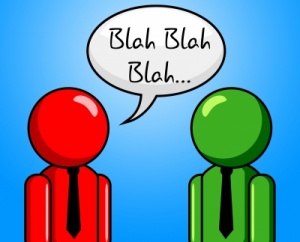
Image courtesy of Stuart Miles at FreeDigitalPhotos.net
I keep coming back to dialogue, don’t I? That is because there is a limited amount of ways to present information to the reader – the narrative, the backstory, the action, and the dialogue. Dialogue is where narrative and action meet, and concentrates on what 50% of your audience thinks is the most important part of the book – the character. The other half think the plot is the most important part – and this well-research scientific statistical split which I just made up has a slide bar for each reader and each genre.
Today the way-back machine returns us to October 2015 on Xterra Web – Five Common Dialogue Mistakes Writers Make – written by Kelly Hartigan (an editor).
She starts off with one of my biggest peeves on her list of five mistakes: Every character sounds the same.
Some people are over-educated, other people got expelled from the school of hard knocks, and still others are pedantic within the speech patterns. Where they lived, what jobs they held, who they are talking to, and why the discussion is taking place all have impact.
“Yeah, Jay-Jay be a handful at times. All you gots to do is text me and I’ll whoop his ass for you when he gets home. I’m 100% behind you Teach. Hell, me and the old man ain’t working mornings, waitressing tips best at dinner and he got third shift after I get home. If you need classroom help, we can be there when we drop the boy off.”
“I don’t understand why Jerard’s grades dropped this semester. His last teacher gave him all ‘A’s’ in first grade. Maybe I should take this up with my friend on the school board, Ms. Stiles? I know you are new to teaching and may not have a grasp of who deserves special attention.”
Dialogue matters. How much of a picture do you have of these two mothers? How about the teacher they are talking and the teacher’s facial expression and mannerisms and thoughts – even though there is no narrative clues whatsoever?
There is a really cool graphic about five positive dialogue traits and five negative dialogue traits which you might want to download. Again the weblink is here: http://editing.xterraweb.com/writing-tips/five-common-dialogue-mistakes-writers-make
WRITING EXERCISE: Write a dialogue-only scene. No speech-tags, no narrative.



